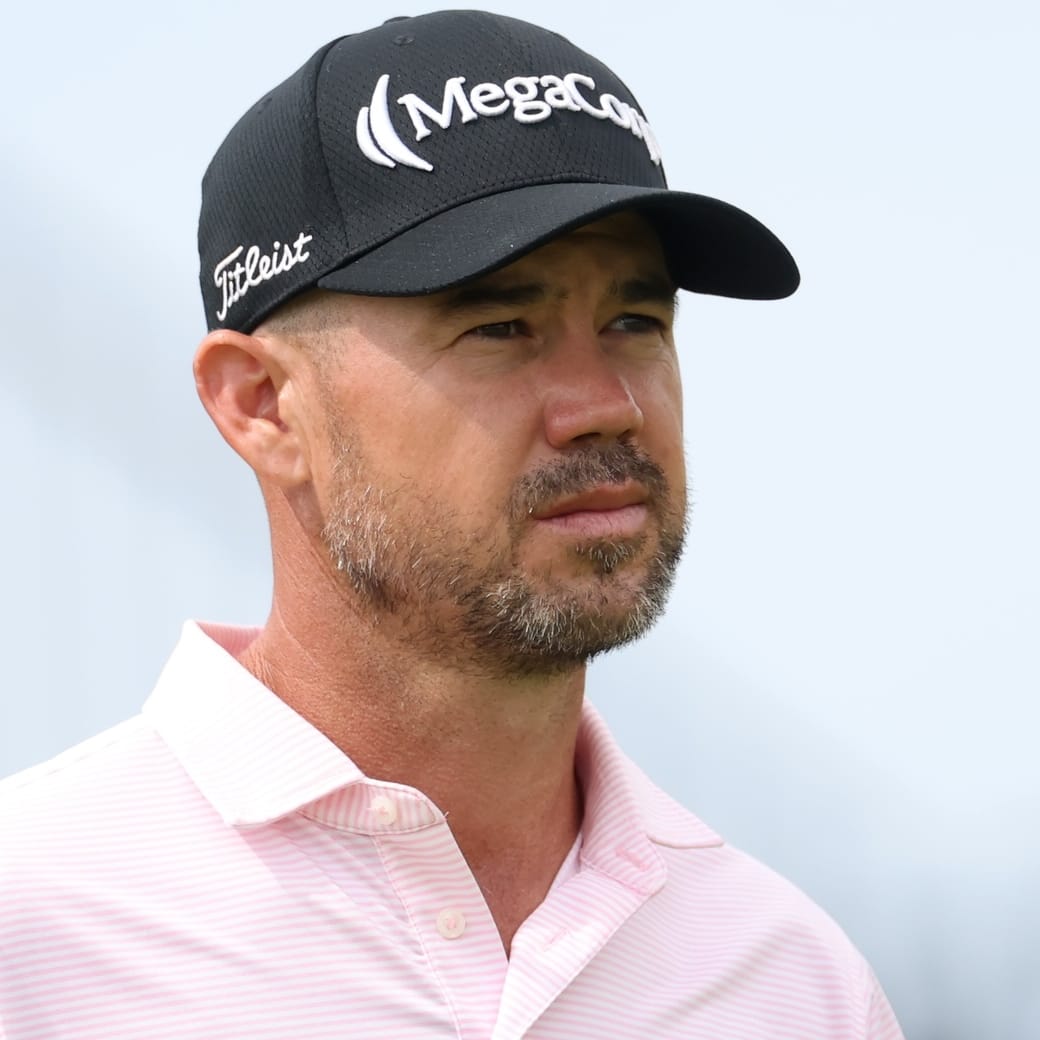Fielkow's Law: Anchors Away – The Controversy Surrounding Golf's Proposed Ban On Anchored Putting
On November 28, 2012, the United States Golf Association (USGA) and the Royal & Ancient Golf Club of St. Andrews (R&A) shook the golf community out of its annual winter slumber with its announcement that the governing bodies of golf had agreed upon a proposed rule change that would ban the anchoring of putters. The proposed change is hardly out of the blue and has caused considerable uproar from many of the sport's elite participants and could have a considerable fantasy effect now and for years to come.
Since 1952, the Rules of Golf have been published jointly by the USGA and R&A in Scotland. It is these two organizations that have been entrusted with maintaining, revising, and implementing the Rules of Golf. According to USGA Executive Director Mike Davis, "(as) governing bodies, we monitor and evaluate playing practices and developments in golf, with our primary mandate being to ensure that the Rules of Golf continue to preserve the fundamental characteristics of the game." Golf's rulebook is long and complicated. The proposed rule change falls under Rule 14 for Striking the Ball. As it is written now, Rule 14-1 states that for the ball to be fairly struck, "the ball must be fairly struck at with the head of the club and must not be pushed, scraped or spooned." The proposed rule would designate the afore-quoted as Rule 14-1a, and add Rule 14-1b concerning Anchoring the
Fielkow's Law: Anchors Away – The Controversy Surrounding Golf's Proposed Ban On Anchored Putting
On November 28, 2012, the United States Golf Association (USGA) and the Royal & Ancient Golf Club of St. Andrews (R&A) shook the golf community out of its annual winter slumber with its announcement that the governing bodies of golf had agreed upon a proposed rule change that would ban the anchoring of putters. The proposed change is hardly out of the blue and has caused considerable uproar from many of the sport's elite participants and could have a considerable fantasy effect now and for years to come.
Since 1952, the Rules of Golf have been published jointly by the USGA and R&A in Scotland. It is these two organizations that have been entrusted with maintaining, revising, and implementing the Rules of Golf. According to USGA Executive Director Mike Davis, "(as) governing bodies, we monitor and evaluate playing practices and developments in golf, with our primary mandate being to ensure that the Rules of Golf continue to preserve the fundamental characteristics of the game." Golf's rulebook is long and complicated. The proposed rule change falls under Rule 14 for Striking the Ball. As it is written now, Rule 14-1 states that for the ball to be fairly struck, "the ball must be fairly struck at with the head of the club and must not be pushed, scraped or spooned." The proposed rule would designate the afore-quoted as Rule 14-1a, and add Rule 14-1b concerning Anchoring the Club. "In making a stroke, the player must not anchor the club, either directly or by use of an anchor point," according to the proposed rule.
The proposed rule is clearly in response to an increase in the use of long putters, including the so-called "belly putter" and "broom-handle putter," in the professional ranks. While the rule will not ban the use of these clubs, if enacted, it would prohibit strokes made with the club or hand gripping the club held directly against the player's body or with a forearm held against the body to establish an anchor point. Three of the last five major champions, starting with Keegan Bradley at the 2011 PGA Championship, used a belly putter to anchor their strokes. Opponents of the practice say that anchoring the club quiets the hands and takes nerves out of the equation, thereby removing part of the skill and challenge from the game and compromising the integrity of the golf stroke, which traditionalists believe should require a player to hold the club away from his or her body and swing it freely.
Despite the actions by the USGA and R&A, however, the rule alteration is not a done deal yet. First, the proposed rule change would not take place until January 1, 2016, keeping with the four-year cycle for such amendments to the rules. In addition, the USGA and R&A offer a three-month period for open comment on any proposal before they approve it. The most recent of these open comment sessions came this weekend at the Farmers Insurance Open at Torrey Pines, where the USGA's Davis explained the ruling and the rationale behind the decision and answer questions from the players in attendance. While it seems unlikely that the governing bodies will back off their amendment, such open comment sessions will certainly give proponents of anchoring the chance to be heard. In a last resort, things may even turn ugly, as some players such as Bradley have not ruled out taking legal action if necessary to combat the rule change. But because the proposal does not outlaw the putter themselves, the threat of legal action by players against the rule is diminished greatly.
Thus, it seems a near certainty that the rule will take effect come 2016. While there are still additional hurdles to climb -- namely the rule's implementation by the independent tours, including the PGA and LPGA -- the task at hand for fantasy golf enthusiasts is determining how and which players are most likely to be affected. It's easy to brush this query aside for the time being since the rule won't be written into stone until 2016. However, such a view could be fatally short-sighted for those seeking fantasy championships this year. Some players, including 2011 U.S. Open Championship winner Webb Simpson, have begun practicing with a traditional length putter in anticipation of the ruling. Even those who will continue to anchor their putters face tremendous pressure to win now before they are forced to reevaluate their putting stroke. Given the enormous mental pressure one bears every time he or she swings a club, the added stress certainly can't help one's game.
As such, the key for fantasy owners is to identify which golfers use the long putter and anchor their strokes and are therefore riskier fantasy options saddled with potential stroke changes and corresponding headaches. One of the most well-known belly putter users is Adam Scott. Scott, like Webb, was reportedly seen practicing with a shorter putter and using a modified grip before the Australian Open in December after news of the proposed rule broke. Since adopting the long putter at the beginning of the 2011 season, Scott moved from near 40th in the Official World Golf Rankings to within the top 10. Given Scott's history of shaky putting -- see last year's collapse at the Open Championship -- it stands to reason that the Australian may be a player to drop a few spots when drafting for this upcoming season with the rule change looming. Similar reasoning may apply to rising stars such as the aforementioned Webb Simpson and Keegan Bradley, as well as Players Championship winner Matt Kuchar, each of whom recently joined the ranks of major winners who have used long putters to anchor their strokes, as well as others who have seen their games and results greatly improved after going non-traditional, including Orville Moody, Paul Azinger, Ernie Els, Rocco Mediate, and Carl Pettersson.
For many years only about 4% of players on the PGA Tour anchored their putting stroke. In 2006, only 6% of players. That number increased to 11% in 2011 and up to 15% in 2012, with some events having as much as 25% of the players using the long clubs to anchor. While the governing bodies' decision may seem like a overreaction to the recent spike in performance by users of the anchored putting stroke, those numbers seem to support their view that the time to act is now in order to curtail the continuing spread of a stroke they feel is not in the best interest of the game. Thus, the ban is likely here to stay, and astute fantasy owners should use this knowledge to their benefit with critical draft decisions coming over the next few weeks.
Justin Fielkow is an attorney at the Franklin Law Group in Northfield, Illinois, a Chicago suburb. Justin attended Tulane University Law School and obtained a Certificate in Sports Law. He has been writing for Rotowire since 2008, first while at the University of Wisconsin, then and still as the beat writer for the New Orleans Saints, and now as a featured columnist providing insight twice a month into the legal side of sport with a fantasy spin.




































